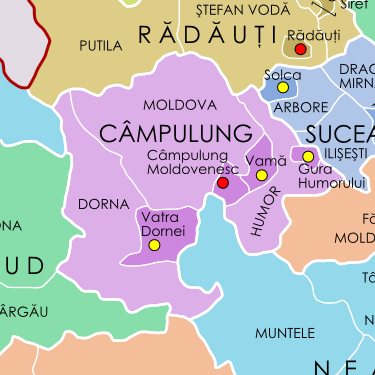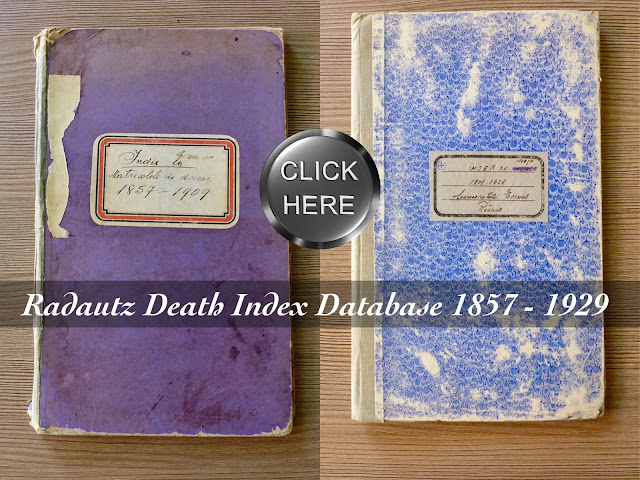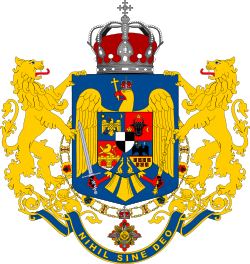Inspired and encouraged by the Czernowitz-L Discussion Group, we have created this site in reverence to the people of Bukovina, a region with an outstanding cultural, social and ethnic diversity.
In addition to Czernowitz-L Discussion Group Website, we would like to provide another collection point for materials (stories, histories, photographs, lists, maps, links, etc.), focused primarily on Address Books, Directories, School Registers, etc. These kind of materials may be of interest to researchers concerned with genealogy and history of the Bukovina.
The Radautz Jewish Vital Records Database 1857-1929
During the summer of 2016, I traveled to Rădăuţi, Romania, and visited the Archives in the Town Hall. After some negotiations and with a little bit of luck, I was given permission to photograph Jewish vital records for the Rădăuţi, Solca, and Vicov communities of Bukovina; see my blog posting "Books of Seven Seals in Rădăuți and Suceava".
Every society enlarges itself through marriages. When you are tracing your family history, this information can offer one of the most common missing links – a maiden name. All marriage records include the full names of the bride and groom as well as the marriage date and other additional information, such as the names and birthplaces of each individual's parents. As part ONE of an ongoing project, The Radautz Marriage Index Database contains over 3,000 properly indexed marriage records for the period 1870-1929.
Even if final, but not trivial at all, death records are among the most important of all vital records. Death Indices typically contain the birth date of a person, date of death, cause of death and other details that are helpful in genealogical and historical research. As part TWO of our ongoing project, The Radautz Death Index Database contains over 7,500 properly indexed death records for the period 1857-1929; some data refer back to births as early as the middle of the 18th century.
NEW: Birth records represent one of the key primary sources for family information and thus they form the centerpiece of any vital records database. They usually show the name of the child, gender, date and place born as well as additional parental details including places of birth, ages, etc. As part THREE of our now completed project, The Radautz Birth Index Database contains over 12,000 properly indexed birth records for the period 1857-1929.
Copies of family vital records are freely available upon request. Whether you are looking for an ancestor or trying to find a lost classmate, these records can provide a link to vital information and point you toward important clues. The free search provided by The Radautz Vital Records Index Database 1857-1929 can jumpstart your research project. Please check it out and let us have your comments…!
bukovina.records@gmail.com
Acknowledgements: We thank Martina and Edgar Hauster for data acquisition and transcription. Bruce Reisch developed the one-step search site and searchable database using the One-Step Search Tool Generator on the Stephen P. Morse website, and with advice from Lucas Reisch. The inspiration for this project came from our late friend, Dorin Fränkel of Rădăuţi, who began to digitally photograph the town's Jewish vital records as early as 2008. We dedicate our efforts to his memory.
Every society enlarges itself through marriages. When you are tracing your family history, this information can offer one of the most common missing links – a maiden name. All marriage records include the full names of the bride and groom as well as the marriage date and other additional information, such as the names and birthplaces of each individual's parents. As part ONE of an ongoing project, The Radautz Marriage Index Database contains over 3,000 properly indexed marriage records for the period 1870-1929.
Even if final, but not trivial at all, death records are among the most important of all vital records. Death Indices typically contain the birth date of a person, date of death, cause of death and other details that are helpful in genealogical and historical research. As part TWO of our ongoing project, The Radautz Death Index Database contains over 7,500 properly indexed death records for the period 1857-1929; some data refer back to births as early as the middle of the 18th century.
NEW: Birth records represent one of the key primary sources for family information and thus they form the centerpiece of any vital records database. They usually show the name of the child, gender, date and place born as well as additional parental details including places of birth, ages, etc. As part THREE of our now completed project, The Radautz Birth Index Database contains over 12,000 properly indexed birth records for the period 1857-1929.
Copies of family vital records are freely available upon request. Whether you are looking for an ancestor or trying to find a lost classmate, these records can provide a link to vital information and point you toward important clues. The free search provided by The Radautz Vital Records Index Database 1857-1929 can jumpstart your research project. Please check it out and let us have your comments…!
bukovina.records@gmail.com
Acknowledgements: We thank Martina and Edgar Hauster for data acquisition and transcription. Bruce Reisch developed the one-step search site and searchable database using the One-Step Search Tool Generator on the Stephen P. Morse website, and with advice from Lucas Reisch. The inspiration for this project came from our late friend, Dorin Fränkel of Rădăuţi, who began to digitally photograph the town's Jewish vital records as early as 2008. We dedicate our efforts to his memory.
Jewish Taxpayers in Bukovina at the End of 18th Century
 |
| Gabriel Anton, Baron Splény de Miháldy (1734-1814) First District-Governor of Bukovina (1774-1778) |
Excerpt from the article "Under Austrian Administration (1774-1786)" by Dr. Nathan Michael Gelber: "On August 31, 1774 the Austrian General Gabriel Freiherr von Splény marched into Czernowitz. On October 10, 1774, all of Bukovina was occupied by Austrian troops under the supreme command of General Splény and became in accordance with the terms of the May 7, 1775 treaty signed in Constantinople by Austria and Turkey an official possession of Austria. With this action of giving up possession of Bukovina and giving sovereignty to Austria, Turkey demonstrated its friendship, gratitude and good will for Austria. With this event, the direct connection between Galicia and Siebenbürgen desired by Austria since its acquisition of Galicia became reality. [...] When Austrian troops marched into Bukovina in October, 1774, according to Splény’s census there were 17,047 families in Bukovina, among them 526 Jewish families giving a ratio of 38 Jewish families per 1000 families of all religions, who were distributed over the entire land. The cities that Splény found were Suceava, Czernowitz, Sereth and Wiznitz. The best houses of the Jews were in Czernowitz. The rest of the houses, about 200, were miserable affairs of wood and clay. [...] In 1776 there were a total of 650 Jewish families with 2906 souls as compared to 526 families in 1775. [...] In the view of the authorities, this rapid increase in the number of Jews called for steps to be taken to reduce their numbers. In 1778 the Jews were even warned not to build any more houses. The authorities even went further by making the Jews pay extremely high taxes and they took measures to make sure the Jews would find no opportunity to obtain funds to pay these increased taxes."
Courtesy: State Archives of Czernowitz Oblast
Census of Romania for the Year 1930: Province of Bucovina by Departments and Districts
Click here for the PDF copy of the original General Census of the Population of Romania as per 29th December 1930!
 |
| Province of Bucovina |
 |
| Câmpulung Department |
Subscribe to:
Posts (Atom)


+Kopie.png)





























